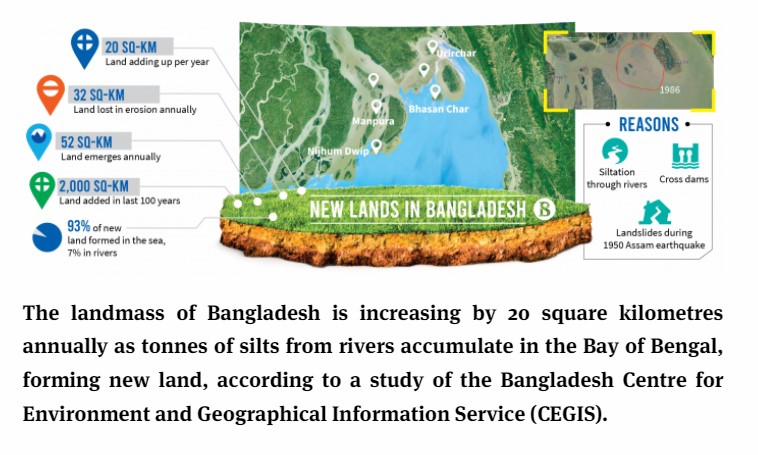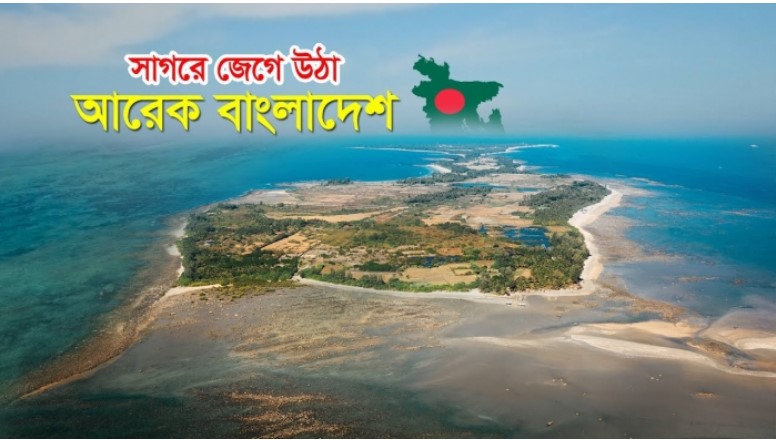In a terrific environmental transformation, Bangladesh is experiencing an annual increase of 20 rectangular kilometers of land. This high-quality trend has huge implications for the country’s geography, ecosystems, and sustainable improvement. This newsletter explores the elements contributing to this land benefit and the capacity advantages it holds for Bangladesh.
Knowledge the Phenomenon
1. Accretion along Riverbanks
One of the number one members to Bangladesh’s land benefit is the system of accretion along riverbanks. Sediments carried by way of rivers, especially the Ganges and Brahmaputra, accumulate over time, gradually extending the land location. This natural phenomenon is a end result of the dynamic interactions between rivers, tides, and sediment deposition.
2. Tidal Dynamics in Coastal regions
Coastal areas play a sizeable position in Bangladesh’s land gain. Tidal dynamics, motivated via the Bay of Bengal, contribute to sedimentation along the coastline. As tides deliver sediments inland, new land is formed, growing possibilities for growth and improvement.
3. Climate trade and Sea degree upward push
Paradoxically, while weather alternate poses challenges inclusive of sea-level rise, it additionally contributes to land benefit in a few areas. Modifications in precipitation patterns and glacial soften can growth river discharge, main to more advantageous sedimentation and the sluggish formation of new land.
Environmental and monetary impacts
1. Agricultural opportunities
The expansion of land offers new possibilities for agricultural activities. Farmers can make use of the fertile soil in newly formed regions, probably increasing agricultural productiveness. This can make a contribution to meals protection and economic growth within the area.
2. Biodiversity Conservation
The newly fashioned land areas provide habitats for diverse flowers and fauna. Conservation efforts in these regions can assist guard biodiversity, retaining particular ecosystems and contributing to average ecological balance.
Three. Infrastructure development
The availability of extra land opens avenues for infrastructure development. Urban planning and the status quo of residential, commercial, and industrial zones can take benefit of the accelerated land place, fostering monetary increase and improved residing requirements.
4. Tourism ability
As regions gain land and expand infrastructure, there may be ability for the growth of tourism. Scenic landscapes, diverse ecosystems, and cultural points of interest in those regions can attract vacationers, presenting monetary possibilities for neighborhood communities.
Challenges and issues
1. Environmental Conservation
Even as land gain brings possibilities, it’s far vital to balance improvement with environmental conservation. Sustainable practices and rules are necessary to protect herbal habitats, save you deforestation, and ensure the lengthy-time period health of ecosystems.
2. Network Resilience
Coastal groups, mainly, want to build resilience against the influences of climate trade, inclusive of sea-stage rise and intense weather occasions. Sustainable improvement strategies need to prioritize network resilience and adaptation.
3. Water management
Effective water control is vital to harness the benefits of land advantage. Right irrigation structures and flood control measures can beautify agricultural productiveness and mitigate the risks associated with extended sedimentation.
Talukder Tetulia : Bangladesh gaining 20 sq-km land a year
Editorial note: The recent findings regarding land erosion and formation in Bangladesh present a
fascinating and complex environmental phenomenon. Over the last century, the nation has experienced
the loss of 32 square kilometers of land annually due to erosion in rivers and the sea, while
simultaneously gaining 52 square kilometers of new land.
This research, published in the “Char
Development and Settlement Project- Bridging,” highlights the significant contribution of sediment
accumulation from dams and geological events like the 1950 Assam earthquake to the formation of new
land. However, it’s crucial to recognize that the rate of land formation has decreased in recent years,
necessitating proactive measures to protect and sustain these emerging areas.
Afforestation and
advanced technological initiatives, as suggested by experts, can play a pivotal role in securing this
newfound land, ensuring it continues to benefit the people and environment of Bangladesh. – Talukder
Tetulia. 30 th October, 2023, Washington DC.





